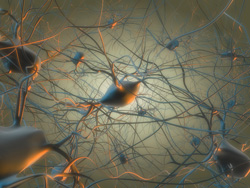Project sheds new light on neural communication
Scientists already have a good understanding of neural communication at the local level (i.e. involving single neurons or individual brain areas). However, less is known about communication between different neuronal assemblies. Neuronal assemblies are groups of neurons that are well connected and are often active at the same time. The neurons in an assembly can be scattered throughout different regions of the brain, and one neuron can be part of a number of different assemblies. Working to boost our understanding of how assemblies exchange information is the EU-funded project 'Large-scale interactions in brain networks and their breakdown in brain diseases' (Brainsync). Launched in 2008, Brainsync is investigating how variations in neuronal communication relate to variations in behaviour. In its second year, the Brainsync partners came up with an array of innovative methods for recording, analysing and modelling neural signals in both humans and non-human primates. For example, one research group has succeeded in using magnetoencephalography (MEG) data to view interactions across brain regions in the resting state. Another newly developed method draws on MEG data to pick up consistent lagged signal interactions between regions. Elsewhere, Brainsync researchers have pioneered the combination in humans of transcranial magnetic stimulation (TMS) and functional magnetic resonance imaging (fMRI). The team recently extended this approach to study interactions between different parts of the brain during active behaviour. The potential clinical applications of the Brainsync project's work extend to the many neurological and psychiatric diseases and conditions which may be characterised by abnormal neural communication, including stroke, head injury, multiple sclerosis and Alzheimer's disease.







